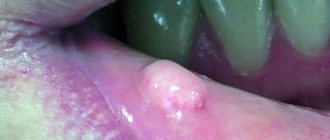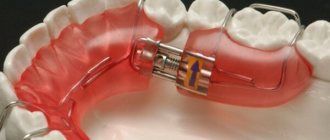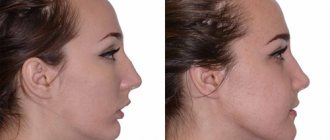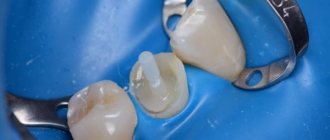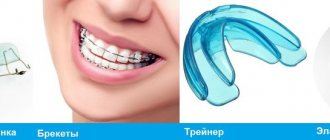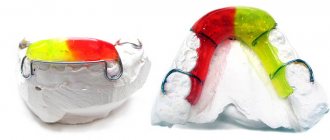S. M. Kochanov Ph.D., CEREC-trainer, dentist
Today, CEREC debunks the myth that increasing the height of the lower third of the face and, accordingly, the bite is a labor-intensive task that can only be accomplished in collaboration with the laboratory. With CEREC equipment, total dental reconstruction with increased bite height can be performed in one visit.
This is possible thanks to the latest software. Options such as smile design, a virtual articulator and the ability to virtually mark tooth contacts make total bite reconstruction an easy and fun task. The presented clinical case describes a technique for increasing the height of the bite in a patient with occlusal wear facets in one visit. The technique described below, I am sure, is not new, and although not described in the literature, it is used by many clinics equipped with CEREC technology. In particular, in the author’s clinic of Tamara Prilutskaya, this technique has been successfully used for several years.
It should be understood that dental reconstruction should be carried out in the absence or subsidence of clinical manifestations of temporomandibular joint dysfunction. And after reinstalling the lower jaw into a new correct position, if necessary, relative to the initial one using, for example, an orthotic, in the future, using CEREC Omnicam, you can simulate a new bite in one visit.
The essence of the application
With an anatomically correct bite, the upper front incisors protrude anteriorly in relation to the lower elements and overlap them by a third. Each chewing unit interacts with two antagonists. The mounds of elements overlap each other.
Several methods are available for correcting pathological occlusion, in particular the installation of permanent crowns.
An artificial crown is a prosthesis that is applied to the prepared surface of a damaged element protruding above the gum tissue.
The purpose of prosthetics is to restore the correct shape, eliminate crowding and speech or chewing defects, and restore the aesthetics of teeth.
Reasons for the development of anomalies
Factors that have a negative impact include:
- Pathological changes in the structure of tooth enamel, leading to accelerated abrasion and loss of tissue density;
- Uncontrollable grinding of teeth during sleep (bruxism);
- Incorrect distribution of chewing load, leading to displacement of units;
- Partial edentia on one or both jaws;
- Metabolic failure, causing a deficiency of useful minerals, primarily calcium and phosphorus;
- Long-term wearing of low-quality replacement structures.
Correct production of dentures requires modern equipment and a comprehensive examination carried out under conditions that ensure complete physiological rest of the jaw apparatus.
Indications and contraindications
Installation of crowns for bite correction is advisable if the patient has certain pathologies:
- Reduced or enlarged elements.
- The presence of defects on the surface of the teeth (chips, damage).
- Curvature or rotation of clinical crowns.
- Increased interdental spaces.
- The top of the unit is completely or partially destroyed.
- Implantation of an implant instead of a removed element.
- Unit divergence.
Covering with crowns does not correct every malocclusion. To eliminate some defects, it is necessary to use other methods that do not require grinding of the support unit.
Prosthetics cannot correct pronounced defects in which the shape and position of the clinical crown and root are disrupted. In such situations, alternative correction methods are used.
It is prohibited to use crowns if the wall thickness of the element is insufficient due to the risk of thermal burn of the pulp.
But what do braces have to do with it?
An important feature of implants is that when chewing they experience stress, and it is transferred to the internal part (pin). Therefore, it is very important to correctly calculate the location of the implant and its angle of inclination. The crown that will be installed on the implant after healing must be in the correct position relative to the remaining teeth so that there is no increased load when closing. Otherwise, the implant will not last long.
Each implant has its own installation angle, which is calculated individually
Preparation for implantation includes modeling the process in a special program. This is a very important stage on which the success of treatment depends. And it is at this stage that a problem may arise: if the bite is incorrect, implants most often cannot be installed, since it simply will not be possible to do it correctly.
Implantation is a complex and expensive procedure. In good clinics, doctors give a guarantee for the work performed, and this, as a rule, is not 1 year, but much longer. Therefore, an experienced doctor will not undertake treatment for a malocclusion, since he will not be able to guarantee a good result.
Sometimes bite problems are not visible to the person himself; for example, with a direct or deep bite, the teeth can be straight and the smile looks generally attractive. But still, this creates a problem for implantation.
Example: teeth are straight, but the occlusion is incorrect
And although treatment by an orthodontist will seriously delay the day when prosthetics can be performed (by at least several months), this stage cannot be skipped.
Material
The service life and characteristics of the product depend on the material of manufacture. Zirconium oxide structures are characterized by increased strength. Even titanium is inferior to this material in terms of strength.
Products are created from stainless steel, metal alloys, plastics, dental ceramics and combinations of materials.
Steel
Durable, technologically advanced and cheap material. Dental sockets are manufactured by stamping in laboratories or factories. The steel cap is open-forged to a configuration that matches the shape of the unit being restored. A coating of titanium nitride and a layer of ceramic or plastic is applied on top.
Due to low aesthetics, crowns are used on chewing elements.
Metal alloys
Combinations of cobalt, silver, titanium and gold are used. Products from refractory compositions are made by stamping, and from low-melting ones, casting and stamping technologies are used.
Prostheses made of noble metals are characterized by high biocompatibility with body tissues and long-lasting use.
Metal ceramics
A layer of ceramic is applied to the metal base, and the structure is fired in a kiln. The products combine the strength of metal and the aesthetics of ceramic composition.
Ceramics
Metal-free products are made from ceramics. They are highly aesthetic. Almost invisible in the oral cavity. Models made from durable types of dental ceramics are made using sintering, casting or sawing technology.
Metal-plastic
Models consisting of a metal base and a plastic layer. They are distinguished by functionality and aesthetics.
Stages of prosthetics
The procedure requires several visits to the dentist. Initially, the patient is examined, interviewed and examined. The doctor develops a treatment plan. The unit is then prepared. The dentist removes a layer of enamel from the tooth equal to the thickness of the crown wall. Local anesthesia is performed.
An impression of the dentition is taken and sent to a dental laboratory. The dental technician chooses the production technology depending on the type of prosthetic structure.
After making the prosthesis, the doctor fits the structure. Then grinding and polishing is carried out.
The prosthesis is fixed with cement. The stump and surface are first degreased and disinfected. At the last stage, the dentist removes excess cement.
Features of care
Crowns do not require special care. It is enough to observe daily oral hygiene and a gentle diet. It is recommended to get rid of the habit of smoking cigarettes.
How to fix a deep bite?
So, how can you correct a deep bite when it’s too late to think about prevention? The choice of treatment for deep occlusion depends on the type of anomaly and the age of the patient. So, for very young children, as we have already said, it is necessary, first of all, to normalize breathing, as well as restore missing and damaged teeth - and then after some time they will begin to close correctly.
At a more mature age, at approximately 5 - 11 years, deep bite treatment is carried out using a plate with a bite pad. It increases the load on the lower front teeth, as a result of which they become smaller, and the lateral ones, on the contrary, become longer, which leads to normalization of occlusion.
Is it necessary to change the crown after orthodontic treatment?
Each case is individual. Sometimes the crown remains unchanged and there is no need to replace it with a new one. Making a new tooth is necessary only in the following cases:
- Deformation of the material, appearance of chips and cracks.
- After removing the braces, the crown began to wobble.
- The crown has changed color and stains have appeared that cannot be removed.
Only after the completion of orthodontic treatment can a conclusion be made whether it is necessary to replace the artificial tooth with a new one. If the prosthesis is made of plastic, the probability of damage to the product is about 90%. Ceramic crowns are more durable and can withstand the upcoming load.
The result of complex dental prosthetics with ceramics
The photographs show the condition of the teeth before and after prosthetics.
The height of the bite is increased, worn edges are restored and the gaps between teeth are closed due to the correctly designed shape of dental crowns.
The integrity of the dentition has been restored.
But this is only the external side of the work done. X-rays show how much the condition inside has changed.
A panoramic photograph of the teeth taken before the start of treatment in 2012 shows the problems that dentists had to solve in addition to missing teeth and severe destruction of individual teeth:
Picture after root canal treatment, removal of some teeth and installation of dental implants (2019):
The distant teeth serve as supports for now, but after prosthetics they will be removed.
Panoramic photo after completion of treatment and dental prosthetics (2020):
The cost of dental treatment and prosthetics amounted to 2,480,000 rubles. The patient knew the full cost from the moment the treatment plan was drawn up and the estimate was signed. Some people are scared that such a large amount is announced at once, but during the course of treatment there are no surprises in the form of additional expenses. Since payment is made in stages, and the deadlines for all stages are set in advance, you can easily plan your budget. Part of the cost of treatment can be returned by taking advantage of the right to a tax deduction. The clinic administration helps prepare all the necessary documents.
